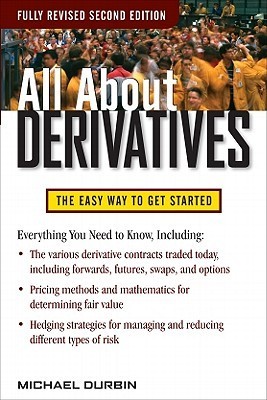What do you think?
Rate this book


"All About Derivatives," Second Edition, presents the complex subject of financial derivatives with a clarity and coherence you won't find in other books. Using real-world examples and simple language, it lucidly illustrates what derivatives are and why they are so powerful. This second edition of "All About Derivatives" provides a rock-solid foundation on: The most common contracts available to you in today's marketKey concepts such as cost of carry, settlement, valuation, and payoffProven methods for establishing fair valueHow leverage can work for you--and against youThe various derivative contracts traded today, including forwards, futures, swaps, and optionsPricing methods and mathematics for determining fair valueHedging strategies for managing and reducing different types of risk
INCLUDES A BRAND-NEW CHAPTER ON THE ROLEDERIVATIVES PLAYED IN THE 2008 FINANCIAL MELTDOWN
288 pages, Paperback
First published August 24, 2005